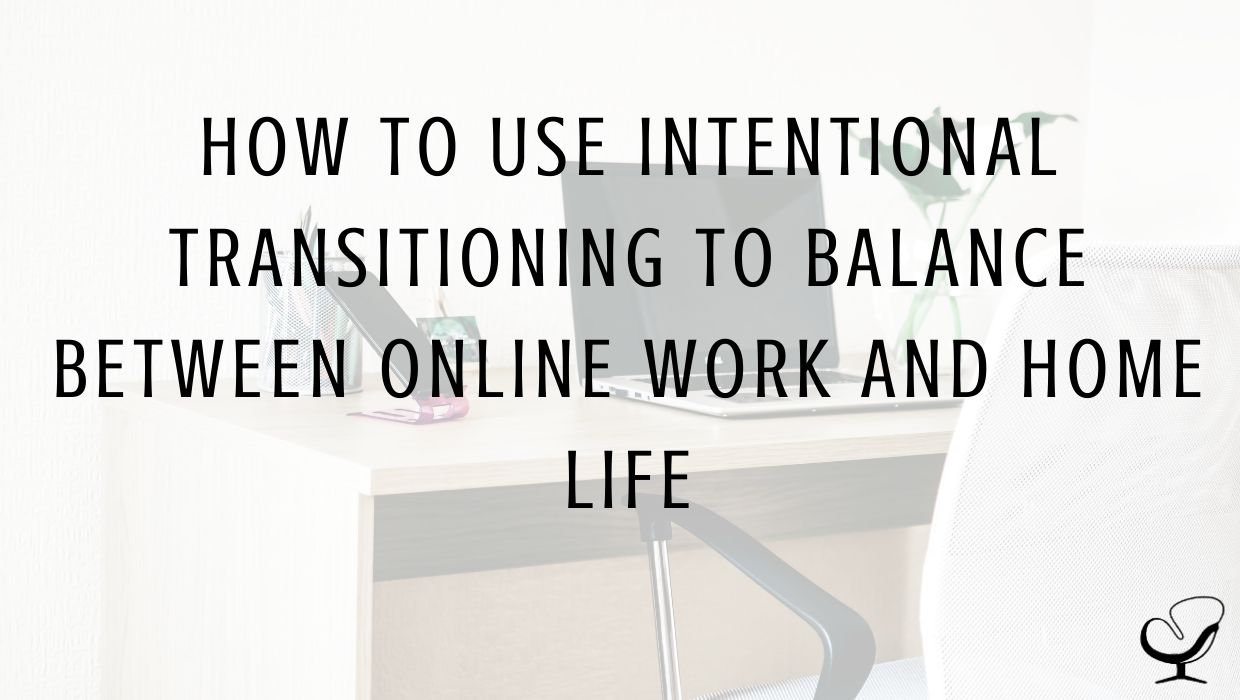As a crisis management consultant and mental health professional, I have led at least 20 groups virtually for various schools, companies, and non-profit organizations around the country since the pandemic started back in March. One common theme that I have noticed with every group and myself is the mental, emotional, and physical blending of home to work, work to home life. What I have been witnessing and hearing from others is there is no distinction in the virtual job world between leaving home to go to work and leaving work to come home. This leaves many people feeling like they don’t have work-life balance. For those of you who have been working from home virtually before the pandemic, this may not be new news to you or perhaps you have figured out a way to deal with it already. For the groups I’ve been leading online thus far, have had to transition their jobs to online in a moment’s notice which has been difficult and stressful for them to say the least.
Effects of poor work-life balance on our Mental Health
Whether it is physically walking through the threshold of one room to the next in your home, or moving your laptop from one table to another table in your home, the online work and home life are blending together. As a result, people are more anxious, irritable, fearful, confused, or tense. People are worried because they feel work/home life is never-ending just as the pandemic feels like it is never-ending. The possibility to work less seems nonexistent. There is no way to get away from it.
Drive Time/ Destress Time
Prior to the pandemic, we spent hours driving in our cars or commuting by public transit to get to our jobs. Even though we might have complained about the time then, now we are appreciative of that “drive time”. Our “drive time” was part of our self-care routine. It was a way for us to destress from our day at work. We could leave it all behind (or at least most it). We would not let it “in” to our family/personal life at home. Now, all of our work/family life is being carried from literally, one room to the next. Who would have ever thought it would take a pandemic to appreciate our time alone in our cars!
Intentional Transitioning
However, I feel the best practice to reduce the triggers and reactivity of blended work/home life is what I term “Intentional Transitioning”. What I mean by Intentional Transitioning is to intentionally focus your mind to notice your body moving from one space (home) to another (work). This is similar to incorporating work-life balance.
Here’s an example.
Starting the Day Off
When I leave to go to work at my home office, I get ready and dressed as I normally do. I pause at the door to my home office, and tell myself, “I am now transitioning to work. I am leaving my home life here at the door. I am not taking it with me to work”. I open the door to my home office, walk through the threshold of the door, close the door, then begin to prepare for my day at work. This practice also includes when taking breaks, lunch, using the restroom, etc. If you don’t have a door to walk through, use your imagination. The idea is for the practice to become automatic in your mind and body. Some people may need to physically walk out the front door of their home or apartment, walk around the block, before transitioning to their home office. Having this transition of mindsets can help increase work productivity.
End Of the Day
At the end of your virtual workday (from your home) intentionally say to yourself, “I am now leaving work. I’m leaving my clients, patients, co-workers, employees, work commitments, etc. here in this room until I return in an hour, tomorrow, next week, etc. If you need to turn off your computer or device to help turn work off in your mind, do it!
Why intentional transitioning is beneficial for work-life balance
When we become conscious and intentional with our mindset and behaviors, change or a shift will happen inside us which will have a domino effect in our home lives. By doing this practice, you will feel more at ease, more relaxed, more present, and more available for others. You will find more enjoyment in your “spare” time and “me” time, and others will take notice too. This could be consciously or subconsciously, but that doesn’t matter. What matters most is the domino effect in which everyone benefits from your choice of making a difference in how you show up for yourself and others. You do this by Intentionally Transitioning your work and home life that currently resides online. Because even if you work from home, work-life balance is vital. Experiment for a week. If it works, keep doing it. If it doesn’t work, try a different approach until a transition fits and is in alignment with you.
To read more blog posts by Lisa Lewis, check out How to Create a Wellness Room to Relieve Anxiety, Stress and Fear and How to Decorate An Online Office which was featured on Practice of the Practice.
 Lisa Lewis has gained extensive training in the mind-body connection with three certificates in energy healing, Level 2 Reiki certified, and a masters degree in Marriage and Family Therapy. She is also part of the Disaster Mental Health Team for the world’s largest volunteer network, the American Red Cross. Lisa is a certified Bereavement Group Facilitator so she has a passion for helping those in need. Get in touch with Lisa at [email protected] or call her for a free consult: 626.319.5076
Lisa Lewis has gained extensive training in the mind-body connection with three certificates in energy healing, Level 2 Reiki certified, and a masters degree in Marriage and Family Therapy. She is also part of the Disaster Mental Health Team for the world’s largest volunteer network, the American Red Cross. Lisa is a certified Bereavement Group Facilitator so she has a passion for helping those in need. Get in touch with Lisa at [email protected] or call her for a free consult: 626.319.5076

